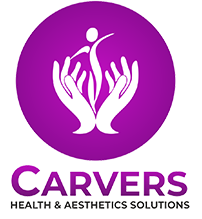
The “Ozempic Face” Debate: Why Weight-Loss Drugs Age Your Face & How to Fix It
Weight-loss drugs like Ozempic and other GLP-1 medications have taken the wellness industry by storm, offering a powerful solution for managing obesity and type 2 diabetes. While these drugs help patients shed significant weight, many are noticing an unintended side effect: the so-called “Ozempic Face.” This refers to facial changes like sagging, hollowing, and premature aging caused by rapid weight loss. But why does it happen, and more importantly, how can it be addressed?
Why Weight Loss Affects Facial Appearance
When the body loses weight quickly, it doesn’t just burn fat in problem areas like the stomach or thighs—it reduces fat everywhere, including the face. Facial fat plays a crucial role in maintaining volume, structure, and youthful contours. Losing it too fast can result in:
- Hollow cheeks and temples
- Loose, sagging skin
- More visible fine lines and wrinkles
- An overall aged or tired look
This phenomenon isn’t exclusive to Ozempic users—it can happen with any rapid weight loss. However, the speed and amount of fat loss associated with these drugs make the changes more noticeable, sparking the now-famous “Ozempic Face” debate.
Non-Surgical Solutions to Restore Youthful Volume
Thankfully, the aging effects of weight loss can be managed and reversed with modern aesthetic treatments. Non-surgical options are often the first line of defense:
- Dermal Fillers: Hyaluronic acid-based fillers restore volume in hollow areas like the cheeks, under-eyes, and jawline for a natural, youthful contour.
- Collagen Biostimulators: Treatments like Radiesse and Sculptra encourage your body to rebuild lost collagen, offering longer-lasting rejuvenation.
- Skin Tightening Procedures: Radiofrequency and ultrasound-based therapies help lift and firm sagging skin by stimulating collagen and elastin production.
These solutions are minimally invasive and offer natural-looking results, making them popular choices for those dealing with post-weight-loss facial changes.
Advanced Regenerative Treatments for Long-Term Results
For those seeking deeper, more sustainable rejuvenation, regenerative treatments are highly effective in combating the “Ozempic Face.” Options include:
- Exosome Therapy: Boosts skin healing and renewal at the cellular level, improving texture and firmness.
- Polynucleotides (PNs): Repair DNA damage and improve hydration, elasticity, and skin quality.
- PRP (Platelet-Rich Plasma): Uses your own growth factors to stimulate collagen production and restore natural volume.
Combining these advanced therapies with non-surgical options provides a comprehensive approach—restoring youthful fullness, tightening loose skin, and enhancing overall radiance.
Conclusion
The “Ozempic Face” may be a hot topic in aesthetics, but it doesn’t have to be a lasting concern. With today’s advanced treatments, facial hollowing and sagging caused by rapid weight loss can be effectively addressed, restoring both youthfulness and confidence.
For personalized solutions and expert care, Carvers provides the best services, offering advanced skin and facial rejuvenation treatments tailored to your unique needs with safe, natural-looking results.
